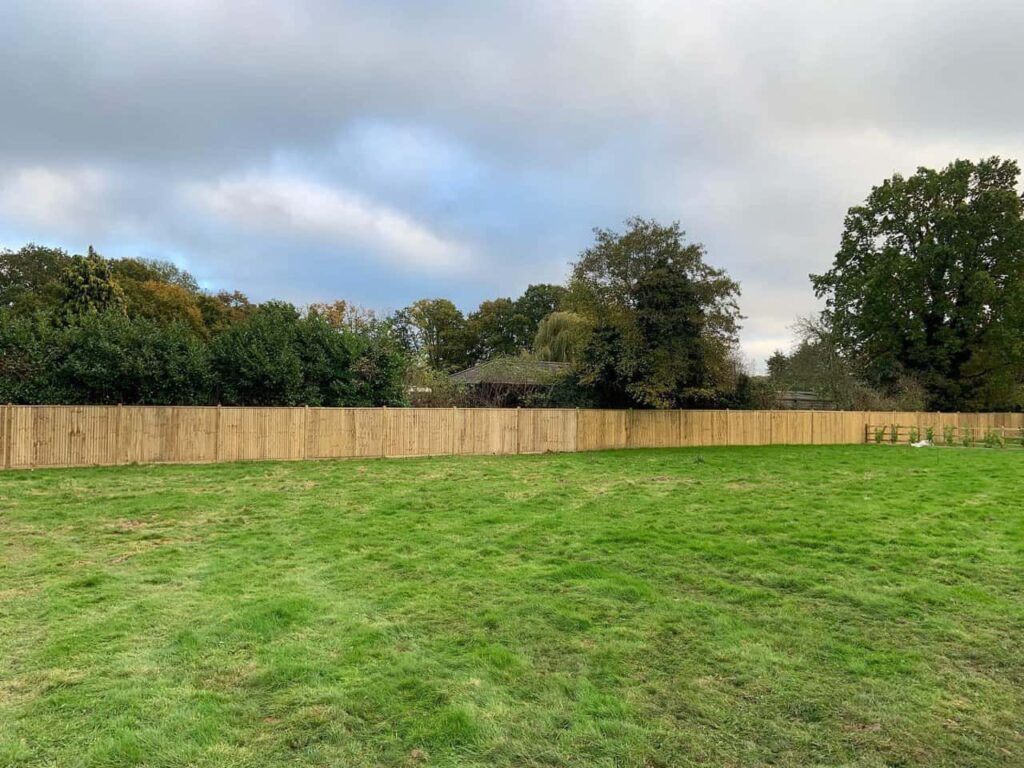Common Stock Fencing Mistakes Farmers Can Avoid With Expert Installers
Introduction
Stock fencing is one of the most important investments a farmer can make. Whether it’s keeping livestock safely contained, protecting boundaries, or managing land efficiently, a properly installed fence is essential to daily operations. Yet, many landowners across Crowborough and East Sussex fall into costly traps when attempting to install stock fencing themselves—or when hiring unqualified labour to do it on the cheap.
At Fast Fix Fencing Crowborough, we’ve spent years helping farmers fix the results of poor fencing decisions. In this post, we’ll walk you through the most common stock fencing mistakes and explain how working with expert installers not only prevents them but saves time, stress, and money in the long run.
Key Takeaways
- Expert fencing ensures livestock safety and reduces escape risks
- Mistakes in alignment, tension and materials can lead to costly repairs
- Professional installation extends lifespan and improves durability
- Every farm has unique needs—there’s no one-size-fits-all solution
Mistake #1: Using the Wrong Type of Fence for the Livestock
Different animals require different fencing. It might seem obvious, but one of the most frequent errors we see is using general-purpose wire where a species-specific solution is needed.
For example:
- Sheep fencing requires smaller mesh to prevent lambs slipping through
- Cattle fencing must be stronger and higher to withstand leaning
- Horse fencing must avoid wire types that can cause injury
Without proper planning, you may end up with fencing that either fails to contain animals or poses a safety risk.
Mistake #2: Inadequate Post Depth and Spacing
It’s tempting to rush through post installation, especially over large areas, but this is where many DIY or rushed jobs fall short. Posts must be set deep enough and spaced correctly to resist animal pressure, wind, and soil movement.
Common issues from shallow or poorly spaced posts include:
- Sagging fence lines
- Loose wire that animals can push through
- Posts that shift or fall over after heavy rain
Expert installers use calibrated methods and equipment to ensure long-term stability, even in challenging terrain.
Mistake #3: Improper Wire Tensioning
Too loose and animals walk through it. Too tight and the wire snaps or lifts posts from the ground. Wire tension is an art as much as a science, and many mistakes stem from improper tensioning techniques.
A professional fencing team will:
- Apply even tension across all runs
- Use strainers, clamps and anchor points correctly
- Adjust for terrain elevation and ground movement
The result? A fence that holds shape, contains livestock and needs minimal adjustment over time.
Mistake #4: Not Accounting for Ground Conditions
Every field has its quirks—clay, sand, rocky ground or sloping land all affect how posts and wire perform. One-size-fits-all approaches ignore this and often lead to premature failure.
Professional installers assess ground conditions before installation and adapt materials and methods to suit. This might include using longer posts, driven stakes, or concrete foundations where necessary.
Mistake #5: Poor Gate Placement and Access Planning
Another often-overlooked detail is access. Gates placed in the wrong locations—or without enough clearance—create unnecessary bottlenecks, reduce efficiency, and frustrate daily tasks.
Expert teams will:
- Consult on farm operations and livestock movement
- Position gates logically for ease of access
- Ensure they are secure and properly framed
It’s a small detail with a big impact on daily farm functionality.
Mistake #6: Overlooking Wildlife and Boundary Regulations
Stock fencing isn’t just about livestock. Farmers also need to consider boundary lines, neighbours and local wildlife. Poorly positioned fences may cause disputes or create hazards for deer, badgers or other species.
Working with professionals means:
- Accurate alignment with legal boundaries
- Advice on wildlife-friendly fencing options
- Installation that complies with local authority guidelines
Mistake #7: Ignoring Long-Term Maintenance Requirements
Some fencing looks great when first installed—but falls apart within a few seasons due to low-grade materials or poor craftsmanship. A quality installation will focus not only on today’s performance, but on reducing future maintenance.
Professionally installed fences:
- Use pressure-treated timber and galvanised wire
- Include proper tensioning systems and braces
- Reduce ongoing repair costs and downtime
Conclusion
Stock fencing may seem straightforward, but a lot can go wrong without the right knowledge, tools and techniques. At Fast Fix Fencing Crowborough, we’ve helped countless farmers across East Sussex avoid the headaches of poor fencing by offering tailored, durable, and efficient installations that stand the test of time.
Don’t let small mistakes lead to big problems—contact our team today to get expert advice, quality workmanship, and fencing that does the job right the first time.
Call us on: 01892 352 697
Click here to find out more about Fast Fix Fencing Crowborough
Click here to complete our contact form and see how we can help with your fencing needs.

